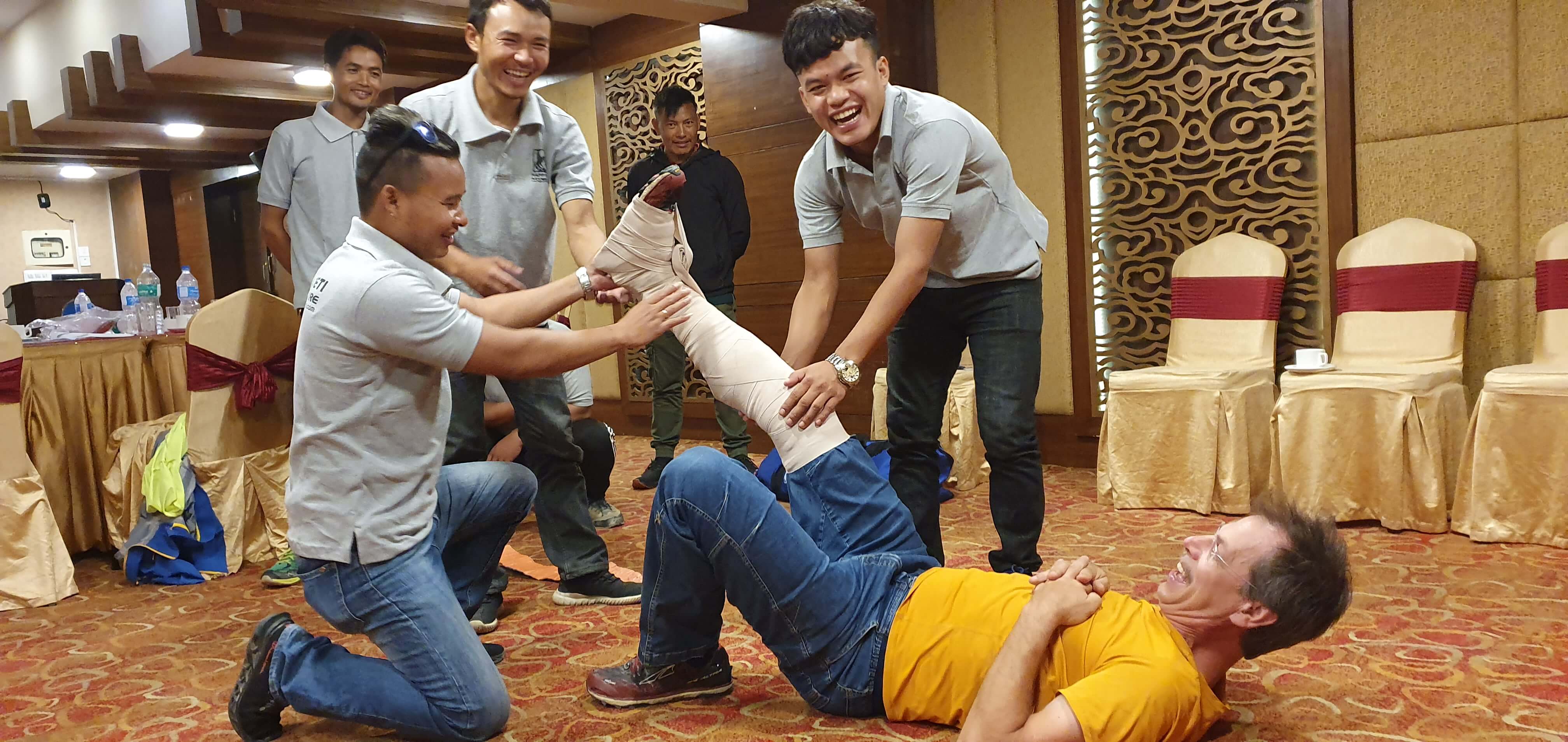Our primarily concern is to provide quality services and facilities staying within the framework of safety and security protocols that meet the standardization of the High Altitude Rescue/Medicine Trainings.
Our field staffs have been trained with high altitude training by IFREMMONT. They all are familiar with hyperbaric chamber (Gamow bag) as well as first aid kits. Usually we provide them refreshment training early month of trekking/Expedition season and one day before journey start. Likewise we are 24/7 connected with our staff even in the Dolpo trek or expedition through Satellite phone.

Once you embark with us, your safety and security assurance is upon us.
Altitude
Altitude | Atmosph. Pressure | %O2 available | Summit |
0 metre | 760 mm Hg | 100% | Sea level |
1000 metres | 675 mm Hg | 90% | Chamonix |
2000 metres | 600 mm Hg | 80% | Ben Nevis |
3000 metres | 525 mm Hg | 70% | Mont Canigou |
4000 metres | 460 mm Hg | 60% | Cervin |
5000 metres | 405 mm Hg | 50% | Mont-Blanc |
6000 metres | 355 mm Hg | 45% | Kilimanjaro |
7000 metres | 310 mm Hg | 40% | Aoncagua |
8000 metres | 265 mm Hg | 35% | Cho oyu |
9000 metres | 230 mm Hg | 30% | Everest |
As we know pattern of oxygen availability decreasing with increasing altitude. In the high mountain regions the air molecules are in very thin and disperse condition due to various factors such as, gravity, temperature and so on. Due to this reason our physical organ functioning system become very slow and demand high oxygen. That's why due to lack of oxygen they did not work properly which resulted High Altitude Sickness.
High Altitude Mountain Sickness is the common syndromes while you are doing trekking in the mountainous region. Normally, Acute Mountain Sickness (AMS) syndromes will appear above 3000 m. But in rare cases it seem to occur from above 2000 m depending the travelers physiological structure and behavior.
There are three level of HAMS.
- Acute Mountain Sickness (AMS): It is mild a form of altitude sickness which is common while you travel in the Himalayas. The most frequent syndromes are headaches, vomiting, breathlessness, abnormal fatigue and insomnia.
If the signs remain moderate, the AMS is considered to be benign and the action to be taken is simple: rest, slow ascent and take a day to relax without gaining altitude, take aspirin or paracetamol and keep hydrate well.
- High Altitude Cerebral Edema (HACE): HACE is the severe condition of AMS where due to lack of oxygen in brain functioning it cause brain swelling. The signs begin form mild AMS and ultimately convert into critical level. Which cause the loss of balance and unconscious the victim.
In order to avoid HACE there is only one way that is acclimatization. If you recognized from HACE the best way to save life is immediately descent down with at least one friend if your health condition enable to walk. Otherwise use hyperbaric chamber (PAC bag) until rescue team is not arrival.
- High Altitude Pulmonary Edema (HAPE): HAPE is one of the major but rare fatal altitude sickness. When in water accumulated in your lung it is known as HAPE. The victim will suffered to difficulty with respiratory system and cannot seat properly, crackling sound came from back. The chance of death is more than 90% of the victim.
 As similar to HACE if the person identified by HAPE descend down as soon as possible by considering the health condition. Otherwise put into Gamow bag until rescue team is not arrive.
As similar to HACE if the person identified by HAPE descend down as soon as possible by considering the health condition. Otherwise put into Gamow bag until rescue team is not arrive.

